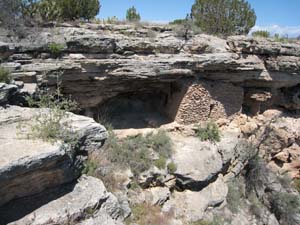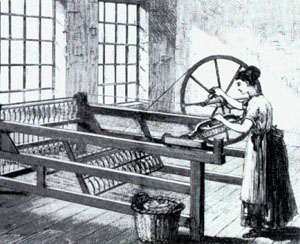Kids Science Trivia
Mammoth Cave, Spinning
Jenny
Introduction
Science Trivia page
includes information about the discovery of Pluto, how caves develop, Mammoth
Cave, bones of the human skeleton, Genghis Khan, industrial revolution and much
more.
PLUTO
Pluto was discovered
in 1930 by Clyde Tombaugh an American astronomer because it was thought a
planet had disturbed the orbits of Uranus and Neptune. It was considered the
ninth planet until 2006 when it was renamed a dwarf planet.
11-year old girl names Pluto
Venetia Burney, an
11-year-old schoolgirl in Oxford, England submitted the name Pluto. She
suggested the name became Pluto comes from the name of the god of the
Underworld in Roman mythology. Pluto was given this name because it is so far
from the Sun that it is in perpetual darkness.

Native American Sinagua farmers lived in
these
caves near Sedona, Arizona. Myrna Martin
CAVES
Caves are holes in
the ground that are usually hollowed out by water. Rainwater trickles through
the caves dissolving the minerals in the rocks. The dissolving minerals form
pockets, hollows and tunnels usually in the rocks. Caves form when there is
adequate precipitation, enough plants and animals producing carbon dioxide and
gentle hills that allow the water to drain slowly. The caves in the picture
above were sand in sandstone. Native American farmers built homes in the caves
and lived there from A.D. 1200 – 1450.
MAMMOTH CAVE
Mammoth Cave
was discovered in 1799 and is the longest known cave system in the world. The
entire cave system has 560 km of caves and passages. The longest underwater
cave system in the world is the Nohoch Nah Chich system in Mexico. Over 51 km
of underwater passages have been mapped.
SKELETON
The skeleton is
the bones that provide the framework supporting the body and hold the different
parts together. There are 206 bones in the adult human body. The baby’s
skeleton contains 300 or more bones. Some of these bones fuse (join) together
as the baby grows.
GENGHIS KHAN
Genghis Khan
was one of the most feared conquerors in history. He was a Mongol leader whose
name means “lord of all.” Genghis Khan
led an army of 250,000 men. His army had more than one million horses. The
soldiers lived on a diet of smoked sheep meat and dried milk. The Mongol Empire
as the largest continuous land empire of all time.

The spinning jenny was
created
in 1764 by a Lancashire weaver.
INDUSTRIAL REVOLUTION
The
Industrial Revolution began with the invention of machines like the spinning
jenny, water wheel, and steam engines that drove machines. The spinning jenny
was created in 1764 by a Lancashire weaver. It was designed to help cottage
weavers to quickly spin wool or cotton fibers into yarn or thread. His design
used lots of spindles at once turned by a single wheel. A seed drill was
invented that made holes and planted seeds in them. This process greatly
speeded up the planting process for farmers.
STEAM ENGINE
The steam
engine was developed in the 1780s by James Watt to drive machines with steam
instead of water. The steam engine quickly replaced water as the main source of
power in factories. The discovery in 1784 by Henry Cort of a method to remove
impurities in cast iron to make wrought iron. Wrought iron became a key
material that fueled the Industrial Revolution.
More Science Trivia, Information & News
Science Articles for Kids - Includes science trivia, information about the Sun’s magnetic poles changing, tourist in space, a two-toned lobster, Kepler telescope discoveries and our science newsletter for kids.
Science Current Events – Sun’s Magnetic Poles The Sun’s magnetic poles switch polarity once every eleven years. This is due to occur in the next few months.
Current Events in Earth Science – Space Tourist Virgin Galactic’s Space Ship Two (SS2) flew over the Mojave Desert in California on September 5, 2013. Virgin Galactic’s goal is flying tourists into space by 2014.
Kids Current Events – Two-toned Lobster A rare two-toned lobster was caught off the coast of Maine. It is estimated that only 1 in 50 million lobsters will have this coloration.
Current Events in Science – Kepler’s Space Telescope NASA’s top planet hunting telescope was launched on March 6, 2009. The telescope has found thousands of planets outside our Solar System since it was launched.
Science Trivia Science page includes information about the discovery of Pluto, cave formation, Mammoth Cave, bones of the human skeleton, Genghis Khan, industrial revolution, spinning jenny and much more science trivia.
Science Inventions The first navigation system was developed for captains sailing in foggy conditions to keep ships from colliding in the fog. The US Military developed an improved system in 1939.
Kids Science Newsletter Our FREE science newsletter is published each month during the school year. The newsletter includes science news, trivia, and a fun activity. Check out a sample of our newsletter on this page.
KIDS FUN Science Bookstore
Check out Myrna Martin's award winning textbooks, e-books, videos and rock sets. The Kids Fun Science Bookstore covers a wide range of earth science topics. Click here to browse.










